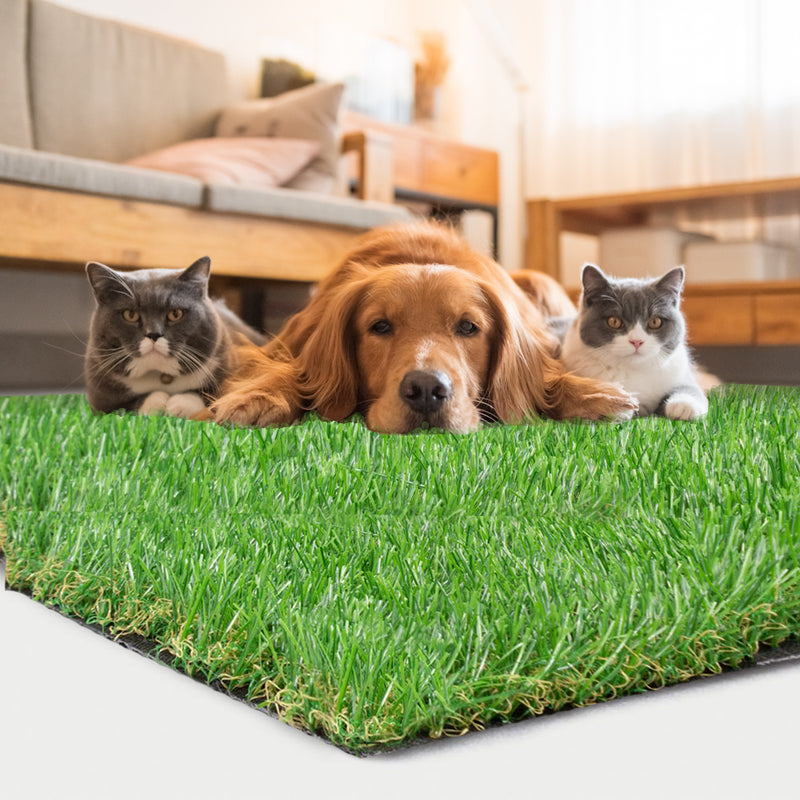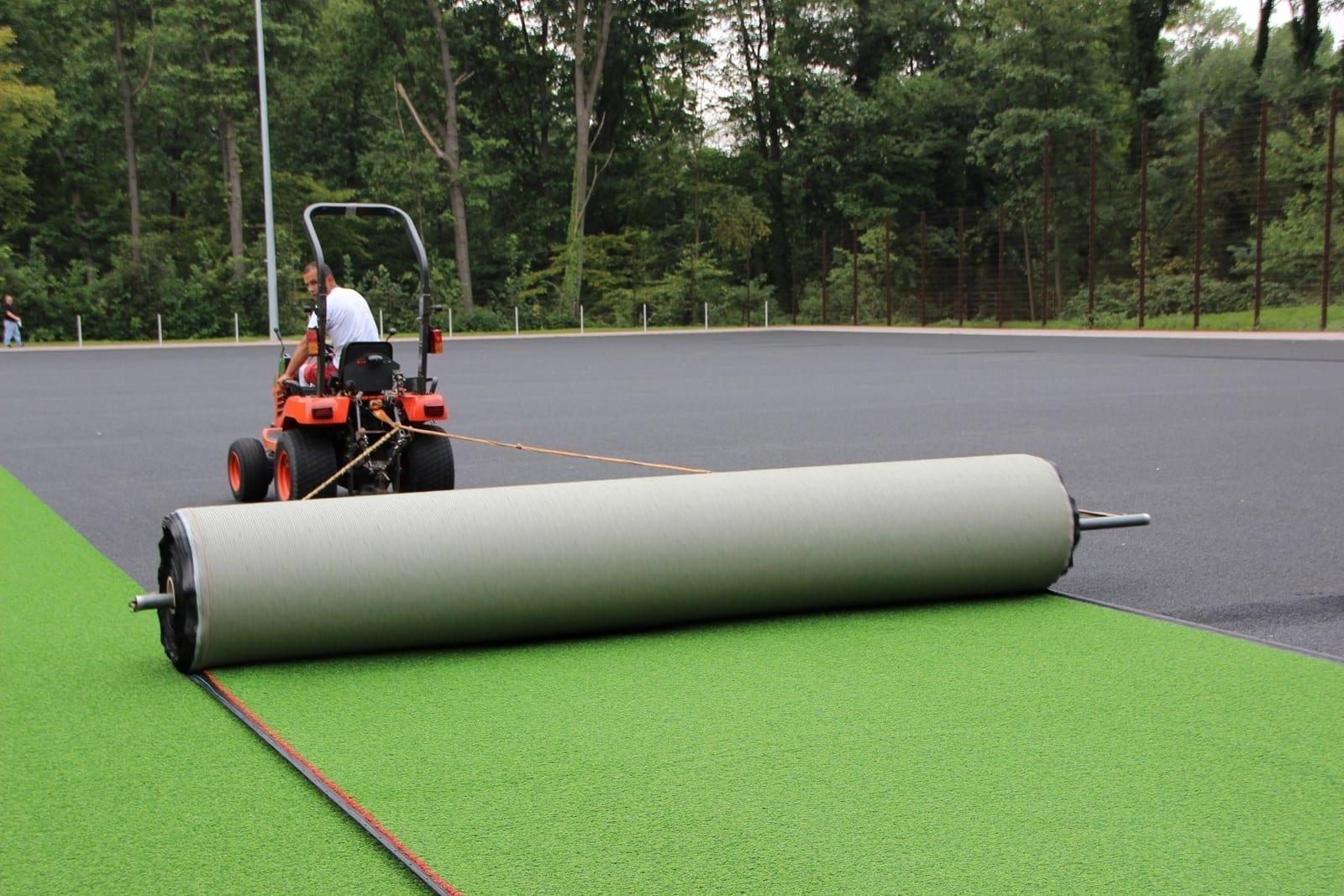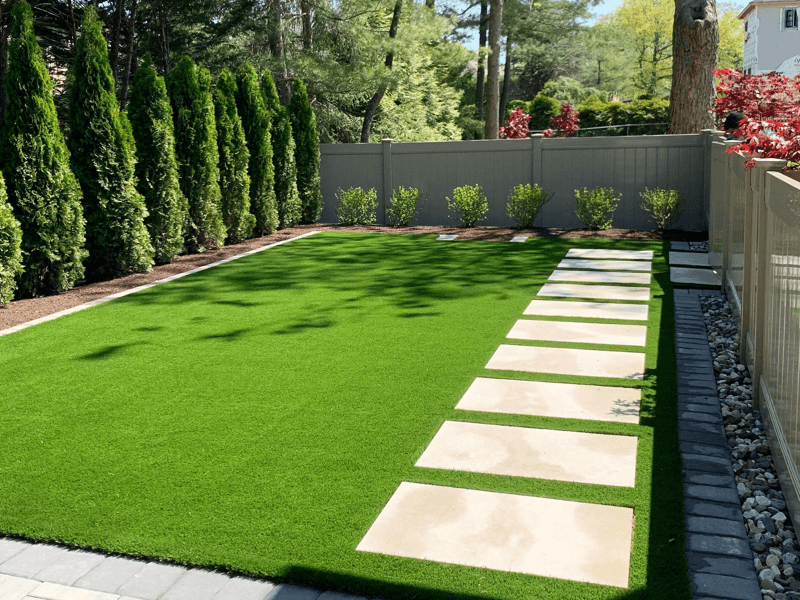Luxury Arizona Turf Installation Solutions for Residences and Businesses
Luxury Arizona Turf Installation Solutions for Residences and Businesses
Blog Article
Delve Into the Environmental Conveniences of Opting for Artificial Turf Solutions
The fostering of man-made turf remedies presents an engaging chance to attend to pressing ecological obstacles. By substantially decreasing water use and lessening the application of dangerous chemicals, these options not just advertise sustainable landscape design but also protect local ecological communities. The reduced carbon impact associated with reduced maintenance activities adds to a more lasting technique to land management. The implications of these benefits prolong past simple conservation initiatives, raising questions about their long-lasting influence on environment preservation and general environmental equilibrium. Discovering these dimensions discloses an intricate interaction worth taking into consideration.
Water Preservation Benefits
One of one of the most considerable benefits of fabricated grass is its ability to save water. Conventional grass lawns need considerable watering, specifically in areas prone to drought or water restrictions. In contrast, synthetic grass does not require watering, dramatically decreasing the total demand for water resources. This attribute is specifically beneficial in deserts where water deficiency is a pushing problem.
By eliminating the need for regular watering, fabricated turf adds to sustainable landscape techniques and assists minimize the ecological effect of too much water consumption. The conservation of water extends to the decrease of drainage, which can lead to soil disintegration and waterway contamination.
Furthermore, the installment of synthetic grass enables municipalities and property owners to allocate water sources much more effectively, focusing on necessary usages such as drinking water and agriculture. The change in the direction of synthetic grass not only promotes responsible water use however likewise straightens with wider ecological objectives targeted at protecting natural deposits.
As communities increasingly prioritize sustainability, the water conservation advantages of man-made grass present a compelling situation for its fostering in household and business landscaping projects.
Lowered Chemical Use
The transition to synthetic grass dramatically lowers the dependence on chemical treatments frequently used in all-natural yard maintenance. Traditional lawn administration usually entails the application of chemicals, plant foods, and herbicides to advertise growth and control insects. These chemicals can position risks to human health and wellness, regional wildlife, and the environment, adding to dirt and water contamination.
On the other hand, man-made lawn gets rid of the demand for these unsafe substances. As soon as set up, it requires marginal maintenance, mainly being composed of normal cleansing and occasional infill replenishment. This reduction in chemical usage not just profits the immediate atmosphere however likewise adds to broader ecological stability. By minimizing the release of artificial compounds into the ecological community, synthetic grass advertises much healthier dirt and water supply.
In addition, the absence of chemical overflow connected with synthetic grass installments aids secure local waterways from air pollution, supporting aquatic life and maintaining biodiversity. Phoenix turf companies. As areas progressively focus on lasting methods, choosing man-made lawn provides a sensible remedy that aligns with environmental preservation objectives. Through this change, homeowner can appreciate lavish environment-friendly areas without endangering eco-friendly health, leading the way for an extra sustainable future
Lower Carbon Footprint

In addition, the setup of synthetic lawn can lead to substantial water conservation. All-natural yards call for substantial quantities of water for irrigation, which not only includes to the carbon footprint linked with water removal and treatment however additionally pressures regional water sources. In comparison, synthetic grass needs click to find out more very little maintenance, needing no watering, therefore substantially minimizing water use and its connected power prices.
Furthermore, the durability of man-made turf adds to its reduced carbon effect. With a life expectancy of up to 15 years or click site even more, the requirement for frequent replacements is diminished, resulting in much less waste and lower power intake in production and disposing of conventional yard options. In general, fabricated lawn presents a lasting alternative for environmentally conscious landscape design.
Environment Conservation
Environment conservation is a vital consideration in the debate over landscape design options, specifically when comparing synthetic lawn to natural grass. All-natural turf lawns usually need substantial maintenance, including using herbicides, plant foods, and chemicals, which can detrimentally influence local ecosystems. These chemicals can leach right into the soil and rivers, hurting indigenous flora and animals and interfering with regional habitats.
Synthetic turf removes the need for harmful chemicals, thereby safeguarding close-by wildlife and preserving the integrity of bordering environments. The setup of synthetic turf can lead to the conversion of previous lawn locations right into even more biodiverse landscapes, such as pollinator gardens or indigenous plant areas, which can support regional wild animals.
Ultimately, the transition to man-made turf not just preserves water and lowers upkeep initiatives however additionally cultivates an extra unified connection between human activities and the natural atmosphere, promoting environment preservation while doing so.
Long-Term Sustainability
Long-term sustainability is an important element in assessing the benefits of synthetic lawn over traditional turf lawns. One of the most substantial benefits of synthetic grass is its longevity; it can last approximately 15-20 years with marginal maintenance, whereas all-natural grass calls for regular reseeding and substitute. This longevity minimizes the requirement for consistent you can find out more sources, such as water, fertilizers, and chemicals, which are vital for keeping a healthy grass yard.
Additionally, man-made turf adds to a reduction in carbon discharges related to lawn care devices. Traditional grass frequently need gas-powered lawn mowers, leaners, and blowers, every one of which add to air pollution. Artificial turf companies phoenix. In contrast, artificial lawn removes the demand for such tools, advertising a cleaner environment
In addition, the production of synthetic grass progressively uses recycled materials, boosting its sustainability profile. As suppliers embrace environment-friendly techniques, the environmental impact of fabricated lawn remains to lessen.

Final Thought
The fostering of synthetic grass remedies provides significant ecological advantages, consisting of considerable water preservation, reduced reliance on harmful chemicals, and a lower carbon impact. Fabricated lawn help in preserving all-natural environments by minimizing land disruption and promoting long-term sustainability via the usage of durable materials. Jointly, these factors underscore the capacity of fabricated turf to add favorably to ecological health and wellness and offer a practical option to typical landscape design practices in a progressively resource-conscious globe.
In comparison, artificial grass does not need watering, substantially reducing the general need for water resources. By decreasing the release of artificial substances into the community, fabricated grass advertises healthier dirt and water systems.
In addition, the installation of fabricated lawn can result in substantial water conservation. In comparison, fabricated grass needs marginal upkeep, requiring no watering, therefore substantially lowering water usage and its linked power costs.

Report this page